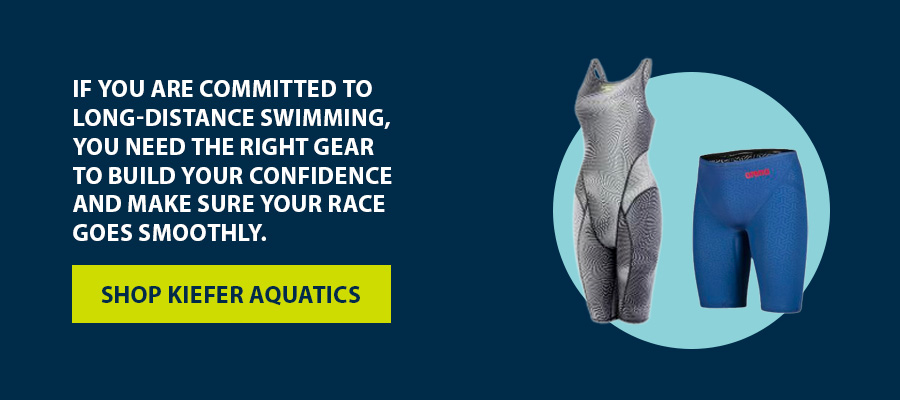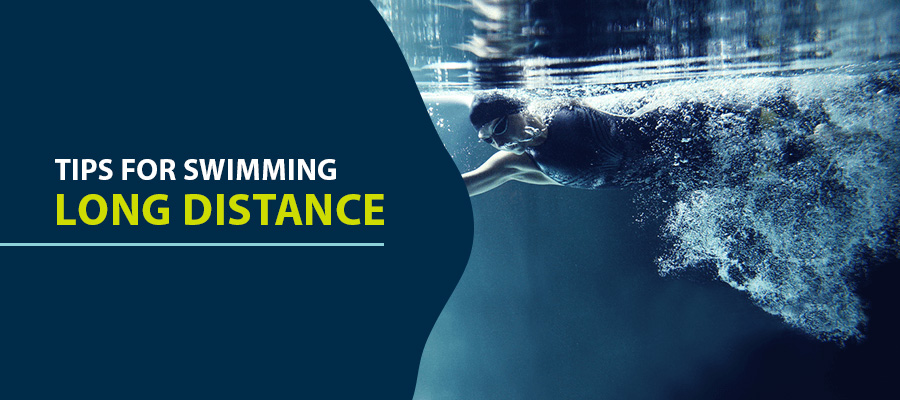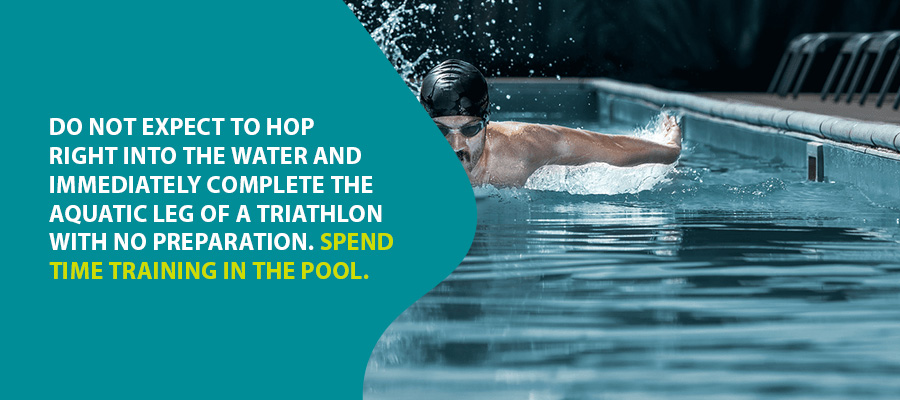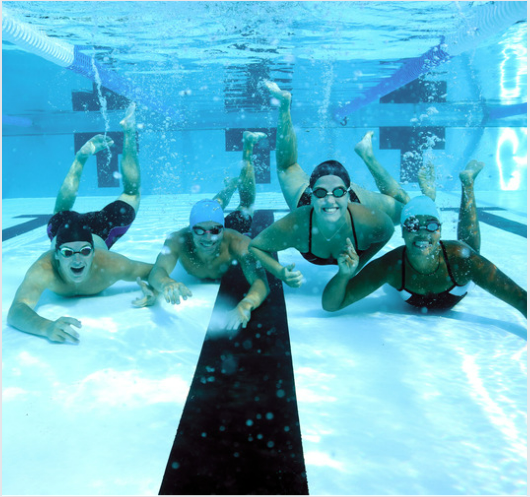Tips for Swimming Long Distance

Swimming News
|
October 25, 2022

Tips for Swimming Long Distance
Long-distance swimming is an intense and rewarding challenge. Some swimmers like to go the distance purely for exercise, while others are in it for a race. Whether you are looking to add miles to your workout or you are gearing up for the swimming portion of a triathlon, distance swimming takes preparation. As with any form of intense exercise, your muscles need time for training. You don't want to find yourself exhausted in the middle of a workout or a race. Learn how to swim long distances with tips on techniques for in and out of the water.How to Swim Long Distance
- Hone your breathing technique: Practiced long-distance swimmers have their breathing patterns down to a science. Quick, uneven gasps of air will make you tire faster and slow you down. On the other hand, even, well-paced breathing will keep you on course. Keep these tips in mind while you work on your breathing.
- Exhale fully: Our instinct is to conserve as much air as possible when we exert ourselves. This instinct can lead to shallow breathing, which causes the body to tire sooner. When you place your face in the water as you swim, be sure to exhale completely. You should see a long stream of bubbles trailing from your nose. If you do not exhale completely, carbon dioxide begins to build up in your body. It will quickly make you feel like you are out of breath. Take your time when you breathe. Take full inhales and long, complete exhales.
- Create a rhythm: Tying breath to movement creates a rhythm that can help you effectively use your energy. Many athletes will create a mantra for themselves as they breathe and move. This chant could be a simple count of "one" for inhale and "two" for exhale.
- Alternate sides: Many swimmers choose a particular side for breathing, but long-distance swimmers may find an alternating patter to be helpful. Switching sides can keep you aware of your surroundings, which is particularly helpful for open water races. Alternating sides can also help swimmers stay on course. One-sided breathing often requires constant course correction to avoid zig-zagging in the water.
- Practice your stroke: How will you complete your distance swim? Will you swim freestyle the entire way? Or, will you change up your stroke? No matter what approach you decide to take, you will need to practice the stroke to ensure it is smooth and even in the water. Long-distance swimming may be a race, but the way to win is with smooth, effective strokes, not the fastest stroke.
- Give yourself time to build endurance: If you want to know how to swim long distances without getting tired, endurance is the most significant factor. Even if you are a seasoned bicyclist and runner, it will still take time to build up your long-distance swimming stamina. Do not expect to hop right into the water and immediately complete the aquatic leg of a triathlon with no preparation. Spend time training in the pool. Pay attention to your stroke and breathing. Build on the distance you incorporate into your workout. Try interval training, which includes warm-ups, sprints and cool-downs. If you have the option, try some of your training in the open water, so you can become familiar with that environment. It is a different experience than swimming in a pool.

- Keep your diet in mind: Not all distance swimming tips are about what you should and should not do in the water. All endurance athletes know the importance of the food you eat during training and the times leading up to a race. Preparing for a long-distance swim can be grueling, even more so if you are simultaneously training for the rest of a triathlon. Remember to eat food with plenty of carbs and protein to fuel your workouts. Whole grains, lean proteins and fresh fruits and vegetables are staples of the long-distance swimmer's diet.
- Learn how to sight: Long-distance swimmers typically get in their workouts and races in open water instead of the pool. If you are racing, the course will have buoys or flags at regular intervals. If you are unfamiliar with swimming in open water conditions, you will need to prepare yourself to spot these markers, which will keep you on course. If you are swimming long-distance recreationally, you will need to ensure the area you have chosen has enough markers to keep you from drifting too far off shore and becoming disoriented.
- Work with the water: If you are swimming in open water with frequent waves, do not try to fight the waves to catch a glimpse of a course marker. Instead, wait for a swell to carry your body forward. At the top of the wave, try to sight the marker. If you are swimming in smooth conditions, try to sight as you turn your head to breathe.
- Adjust your stroke: Time is precious, especially during a race. You do not want to stop swimming and tread water to sight a marker. If you are looking, temporarily kick harder to keep your body moving forward as you move your head to catch sight of a marker.







Leave a Comment
Your email address will not be published. Required fields are marked *